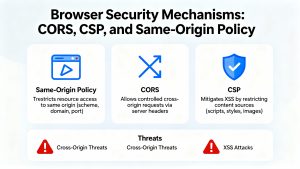DevOps has revolutionized the software development landscape, moving away from infrequent, large-scale deployments to a model where software can be released multiple times a day. However, implementing and maintaining a successful DevOps culture comes with its own set of challenges. This article explores some of these hurdles and highlights five technologies that can assist DevOps teams in overcoming them.
Cultural and Organizational Differences
One of the main obstacles faced by mature DevOps teams is navigating cultural and organizational differences. These disparities often arise from varying work styles, communication methods, and prioritization strategies among teams. For example, development teams may prioritize rapid innovation while operations teams focus on stability and security, leading to potential conflicts. Aligning these differing priorities necessitates ongoing negotiation and coordination, which can be both time-consuming and complex.
As organizations expand and incorporate diverse teams—especially those working remotely or internationally—effective communication becomes even more crucial. While diversity can enhance creativity and problem-solving, it also poses challenges in aligning goals and workflows, often resulting in delays and misunderstandings that hinder efficiency.
Complexity of Automation
In advanced DevOps environments, the intricacies of automation present a daily challenge. As the infrastructure and application landscape evolves, automation scripts that were once effective can become cumbersome and difficult to manage. Keeping these automation processes current with the ever-changing technology stack demands significant time and resources.
Moreover, integrating new tools or updating existing ones can introduce additional complexity, leading to potential errors or system downtime. This situation not only slows down deployment but also requires ongoing investment in learning new tools and methodologies. Striking a balance between robust automation processes and the flexibility needed for a dynamic environment is a constant challenge for DevOps teams.
Cross-Team Collaboration
Successful cross-team collaboration is essential for DevOps teams but often proves challenging in practice. The interdependence among various groups—such as development, operations, quality assurance (QA), and security—requires high levels of coordination that can be obstructed by differing objectives, tools, and terminologies. Communication barriers may result in misalignment regarding project goals, causing delays and inefficiencies.
In a fast-paced DevOps setting, ensuring that all team members are informed about updates, changes, and issues necessitates meticulous attention. This challenge is magnified when teams are geographically dispersed; time zone differences and cultural nuances add further complexity. Regular synchronization meetings, clear communication channels, and shared tools are vital but must be managed carefully to avoid meeting fatigue or information overload.
Consistency and Standardization
Maintaining consistency across various projects is another significant challenge for mature DevOps teams. As the number of services and microservices grows, ensuring adherence to uniform standards for coding, security, and deployment becomes increasingly difficult. Inconsistencies can lead to major integration issues that slow down the entire delivery process.
Additionally, different teams may prefer distinct tools or practices, complicating efforts to create a standardized environment that meets everyone’s needs without sacrificing efficiency or quality. Regular audits, effective governance practices, and a careful balance between flexibility and standardization are essential but require ongoing effort.
5 Lesser-Known Technologies That Can Help
While no single technology can completely eliminate these challenges, several tools can significantly ease the workload for DevOps teams:
- Chaos Engineering Platforms
Chaos engineering platforms help mitigate unexpected system failures by intentionally introducing faults into systems to observe their responses. By identifying weaknesses proactively, teams can resolve issues before they affect production environments. Tools like Gremlin and Chaos Monkey facilitate controlled chaos experiments that provide valuable insights into system resilience. - Application Dependency Mapping (ADM)
ADM enables DevOps teams to visualize application architectures and their interdependencies. This holistic view is crucial for diagnosing performance issues quickly. By understanding how components interact, teams can effectively troubleshoot problems without extensive code reviews. - Policy-as-Code Solutions
Policy-as-code practices involve codifying policy definitions within version control systems. This approach automates policy enforcement, reducing manual compliance checks significantly. Tools such as Open Policy Agent allow policies to be versioned, tested, and reviewed like code—streamlining policy management processes. - Service Mesh Technologies
Service mesh provides an infrastructure layer dedicated to managing service-to-service communication in microservices architectures. By handling common concerns such as load balancing and traffic management at the mesh level rather than within individual services, it saves time for DevOps teams while enhancing observability of service interactions. Popular options include Istio and Linkerd. - Codeless Test Automation Tools
Codeless test automation tools simplify the testing process by allowing users to create automated tests without extensive coding knowledge. Using graphical interfaces for test design accelerates test creation while facilitating easier maintenance as applications evolve—ensuring seamless integration with CI/CD pipelines.
As technology continues to advance rapidly, it is vital for DevOps teams to stay informed about emerging tools that can optimize their workflows. The technologies discussed in this article have the potential to save significant time while making complex DevOps processes more manageable.
Read more such articles from our Newsletter here.



